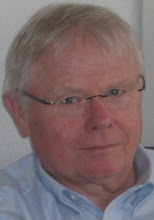
(Foto: Mor Hananyo, the Saffron Monastery, Deir ul-Zafaran, near Mardin)
Manyfold are the Gods that have been worshipped in the land where Tigris and Euphrates are born. Greek and Roman Gods once came – and went again, whenever the Persians took over. The Persian Gods later had also to make room, for the One God of the Christians who in turn was replaced by the One God of the Muslims. His was the final reign after the Buddhist Mongols went back to Central Asia. The Muslim Osmans installed around 1550 what the Arabs, centuries ago could not keep for long, a Muslim government. But even this reign was not undisputed. In Mardin a rest of what in some ways looks like the old Persian faith in Zoroaster or Zarathustra remained until today: the Yazidi faith.
Wikipedia has an article about the Yazidis that live here or used to live here since many of them went abroad just recently. Their origin is unclear, obviously they took elements from most of the other religions in the area, baptizing or circumcising children without making a difference. They believe in transmigration, the walking of the soul from one person or one being to the next.
I like one idea of them: every person has a soulmate, a yonder-brother (biraye achrete) or -sister that will spend eternity with him or her. Your brother or sister will guide you through the heavenly gates, may take over some of your moral responsibilities in front of the eternal judge and so prepare paradise for you. The thought amazes me – in my society where nobody really cares for a second live up in heaven the idea of a friend that is already there seems strange. I wished I had one…
How did the Muslim faith come to Eastern Anatolia and how did it get roots to stay? The Arabs conquered the complete region between Egypt and Syria within 20 years after the death of Mohammed in 632. That included Eastern Anatolia, too. Both superpowers in the region, the Persians and the Byzantine Romans had weakened their respective forces in yearlong fights against each other. That was one of the reasons for the Arabs sudden success. Nevertheless the enormous victories of the Arabs that afterwards went to conquer Persia and parts of India and Central Asia have until today never been fully explained.
The Arabs could not hold the region for long. Other forces came back, first the Armenians. They kept a kingdom for many years. When after them around 1100 the Seljugs came in from Central Asia it was the second Muslim nation to govern the region. Without the exact knowledge of the different ways that the Arabs and with them the Muslim faith took into Central Asia the Seljug Islam looks nevertheless like a “re-import” of a faith that had been there before.
It was later threatened by the Buddhist Mongols who conquered the region around 1240. Other Turk tribes took over some 100 years later and brought Islam back but were again defeated by the Persians in 1502. The Osmans finally installed a Muslim government that lasts until today. Islam was the first faith from then on, but a variety of Persian and Christian faiths was allowed to exist here, also. This variety went along with a broad ethnic spectrum of the old Byzantine and Armenian population blended with people from Mesopotamia, Persia, Arabia and of course Central Asia.
They all were addressed when around 1925 Attatürk came and asked “The Turk” to be proud, to go to work and to trust. Without justification for every hardship he imposed on people to unify his country and to standardize his vision of what “Turk” meant one gets a high respect for a man who at least could think of this colourful patchwork of nations and beliefs to be unified under a single flag, a red one with a moon and a star on it.
 From the Monastery St. Ananias / Mor Hananyo we have a wide look into the Mesopotamian plain that stretches, flat like an ocean, below the mountain range of Mardin. Mor Hananyo is called the Saffron Monastery because of its color and has a Syrian Orthodox Church in it that has been there through the centuries.
From the Monastery St. Ananias / Mor Hananyo we have a wide look into the Mesopotamian plain that stretches, flat like an ocean, below the mountain range of Mardin. Mor Hananyo is called the Saffron Monastery because of its color and has a Syrian Orthodox Church in it that has been there through the centuries.
One of its members tells us that the situation of the Church during the times of the Turkish Republic never has been better than among the ruling Erdogan party, which is under the permanent suspicion to be Islamist.
The directors of a Gülen school in Mardin that we meet at night tell us the same: there is a growing peace between the ethnic and religious groups here, and it can be used to improve education among the many schoolchildren.
These Gülen-men are gentle people, very down to earth, easy going yet with a strong vision of a better life for all the many children they see. I try to imagine them working for a Christian ministry, and I would be glad to have them as ambassadors of my faith.


No comments:
Post a Comment